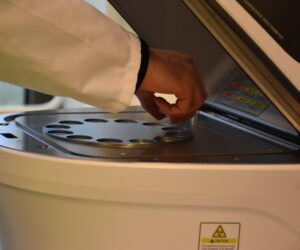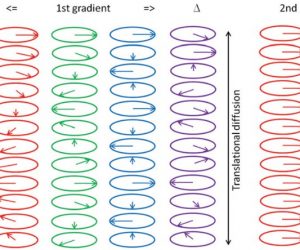Application Notes
All Blogs/Application Notes
Precision synthesis of nanoparticles
What this post is about
Here you will read about the spark ablation technology which can be used for precision synthesis of nanoparticles. Many of us are scared of lightning and it could be argued rightfully so. Voltages in the millions along with currents over ten thousand Ampère can be destructive. What most of us don’t realize is that the electric sparking phenomenon has led to many interesting scientific discoveries, for example to Hertz’ observation of the photoelectric effect.1 This technique is based on the same physical principle called sparking that gives rise to lightning. When an electric spark is generated between an anode and cathode of materials of choice, the high energy of the spark is dissipated through thermal radiation and ionization. The ionization created charged particles originating from the cathode and anode. When a gas flow is present in the gap between the cathode and anode, the ionized particles are carried away with the flow and can form nanoparticles (NPs) suspended in the carrier gas.
Why is precision synthesis of nanoparticles important?
In the field of heterogeneous catalysis, it is well-known that the size and shape of catalysts is correlated to the catalytic activity. To study the catalytic activity, NP catalysts need to be of narrow distribution in size and shape. This enables characterization via methods like HR-TEM and spectroscopies like FT-IR and XAS. Very often, particles produced using techniques like precipitation or colloidal deposition are not uniform enough. Enter Spark Ablation in Gas (SAG), a technology creating very well-defined particles. The technique is based on the same physical principle called sparking that gives rise to lightning. When an electric spark is generated between an anode and cathode of materials of choice, the high energy of the spark is dissipated through thermal radiation and ionization.2 The ionization created charged particles originating from the cathode and anode. When a gas flow is present in the gap between the cathode and anode, the ionized particles are carried away with the flow and can form nanoparticles (NPs) suspended in the carrier gas. Deposition of these suspended particles on a matrix creates samples ideal for catalyst characterization studies.
Control over composition as well
Besides control over shape and size, the composition of SAG-generated NPs can be controlled through the choice of electrodes. The simplest choice is two electrodes of the same material, resulting in nanoparticles of one type. Electrodes different in nature produce mixed nanoparticles, the same can be achieved by using alloyed electrodes. The group of Schmidt-Ott has even taken this one step further, by employing an oscillating spark they managed to manipulate the ratio of the cathode and anode materials in the produced nanoparticles.3
Controlled synthesis for TEM & SEM studies at Spark904
In collaboration with functional materials expert Assoc. Prof. Stefania Grecea (UvA) we have access to an SAG apparatus. If you want to know more about the possibilities of SAG or are looking for a partner to perform specific NP syntheses, don’t hesitate to contact us.
- Hertz, H., Ann. der Phys. und Chemie 1887, 267 (8), 983–1000.
- Schwyn, S., Garwin, E.; Schmidt-Ott, A., J. Aerosol Sci. 1988, 19 (5), 639–642.
- Feng, J., Ramlawi, N., Biskos, G.; Schmidt-Ott, A., Aerosol Sci. Technol. 2018, 52 (5), 505–514.
More recent Application Notes

EDX as a fast and reliable method for routine elemental analysis

NMR technique for average molecular weight determination of polymers
Let's
talk.
Together with you, we
make sure that we find
the answers.
Call us on +31 6 27080833
or use the form.

